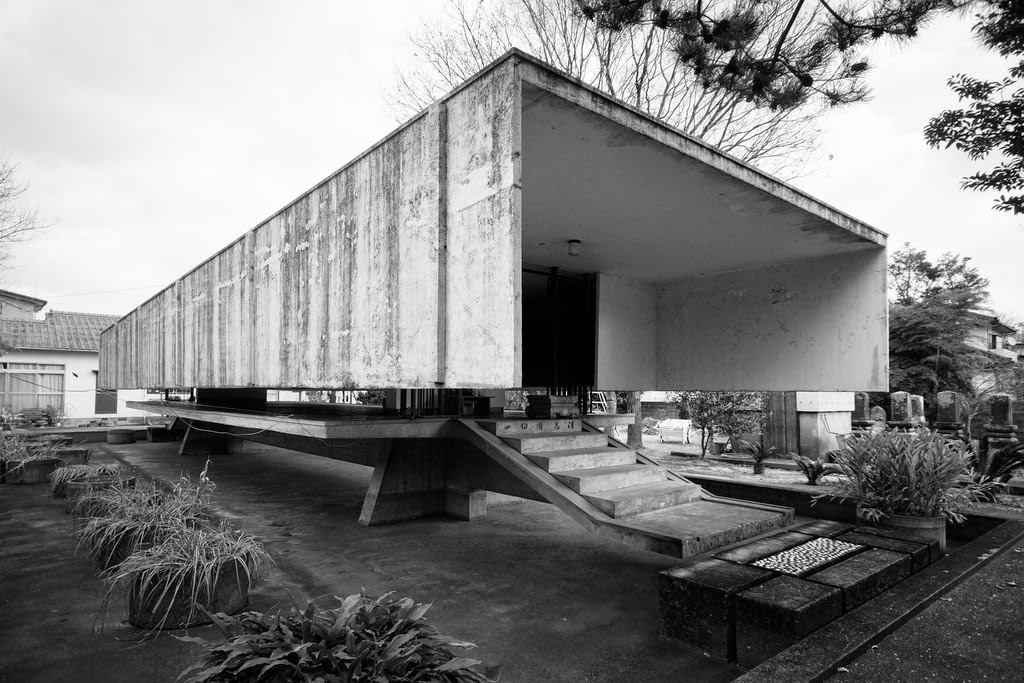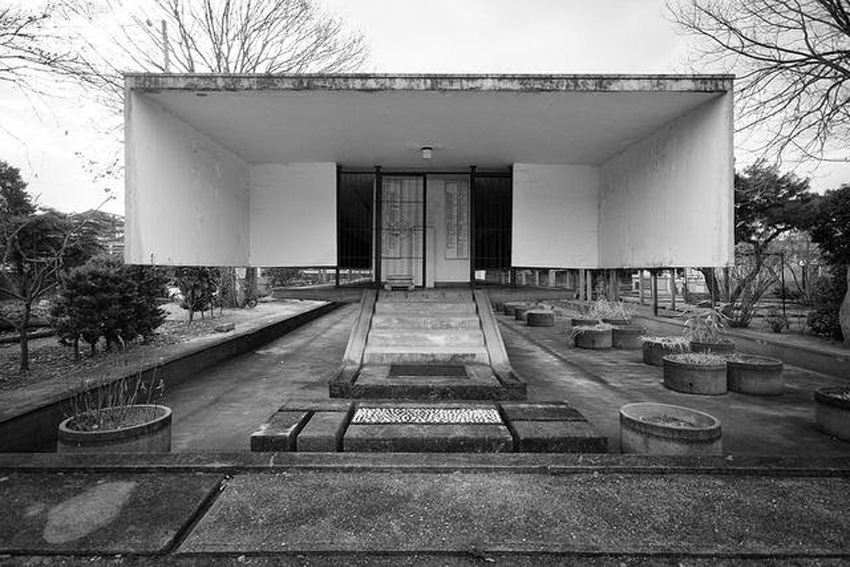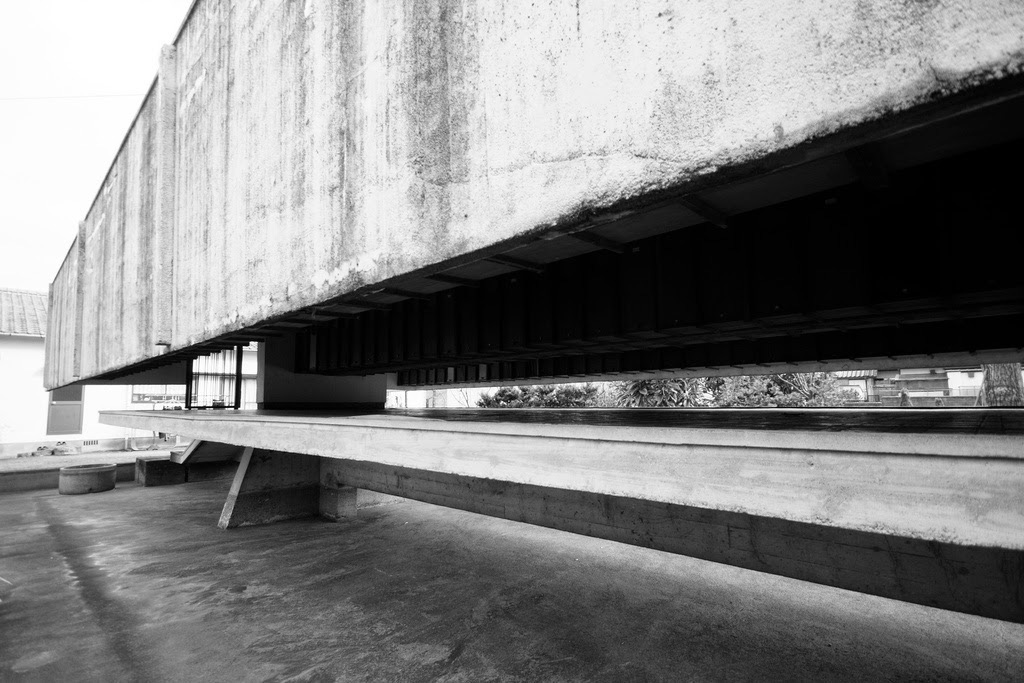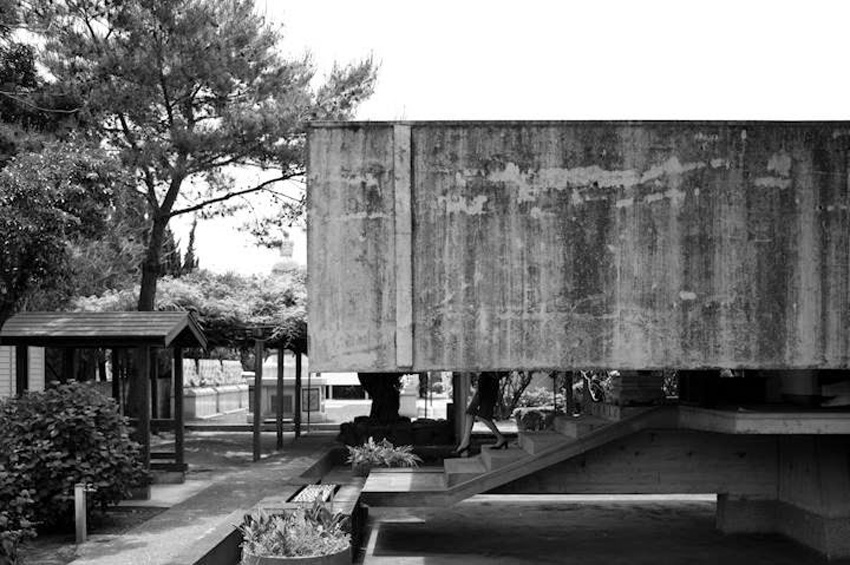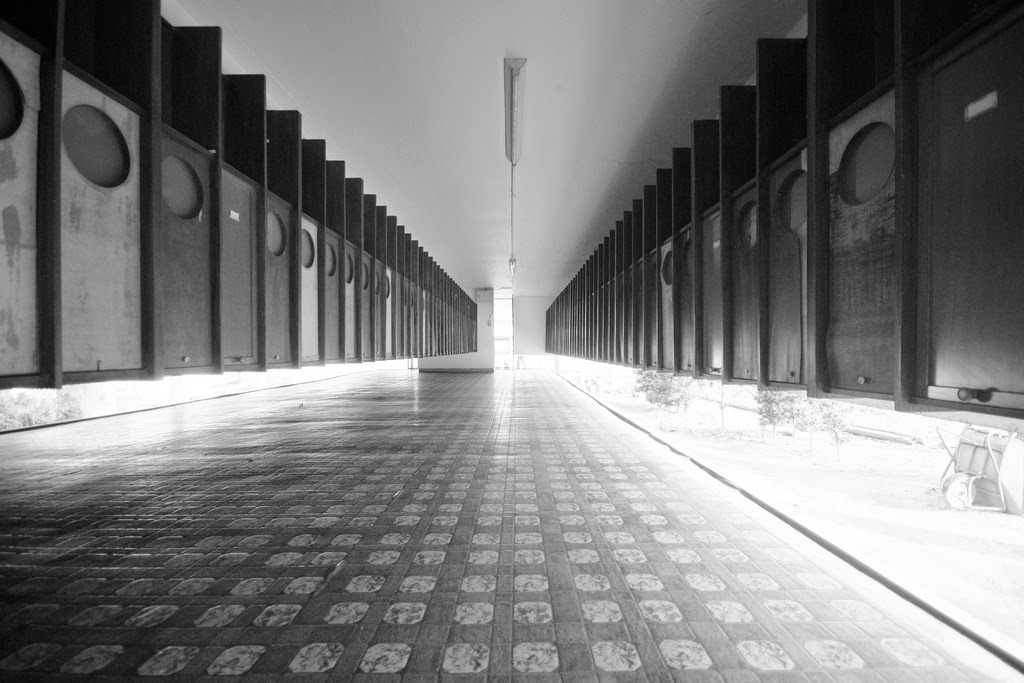Completed in 1965 by Japanese architect Kiyonori Kikutake, the Toku’un-Ji Temple stands as a remarkable testament to modern architectural innovation. What sets this temple apart is its distinctive roof design, which derives its form directly from the ingenious construction method employed in its creation. This innovative approach not only showcases Kikutake’s pioneering spirit but also reflects a harmonious blend of traditional Japanese aesthetics with contemporary architectural techniques. Toku’un-Ji Temple invites visitors to appreciate the marriage of form and function.
Toku’un-Ji Temple Ossuary Technical Information
- Architects: Kiyonori Kikutake
- Location: Toku’un-Ji, Japan
- Project Year: 1965
- Materials: Concrete
- Typology: Religious Architecture / Temples
- Images: © Flickr User: Guen-k
In the temples of Japan, a roof of heavy tiles is first laid out, and in the deep, spacious shadows creates by the eaves the rest of the structure is built.
– Junichiro Tanizaki, In Praise of Shadows
Toku’un-Ji Temple Photographs
The Elegance of the Toku’un-ji Temple Ossuary
The Toku’un-ji Temple Ossuary is a testament to Kikutake’s ability to seamlessly blend traditional Japanese architectural elements with forward-thinking design concepts. Its facade exudes a sense of calm and introspection, with a predominant structure that resonates with the tranquility often associated with Japanese temples.
The Toku’un-ji Temple Ossuary’s roof is a captivating feature that not only serves an aesthetic purpose but also reflects the ingenuity of its architect. The roof’s design is directly influenced by the temple’s construction method.
The roof’s angular forms not only catch the eye but also pay homage to the principles of Metabolism. It stands in stark contrast to the traditional temple roofs found in Japan, which are typically characterized by their simplicity and gently sloping lines. Kikutake’s innovative roof design adds a layer of complexity and intrigue to the temple, making it a conversation piece in the world of contemporary architecture.
While Kikutake’s architectural innovations are undoubtedly remarkable, the Toku’un-ji Temple Ossuary remains, at its core, a sacred space. It serves as a repository for the ashes of the deceased, embodying the profound spiritual importance of Japanese temples. Visitors to the temple are invited to reflect upon the circle of life and death, and the temple’s serene surroundings provide the perfect atmosphere for contemplation.
About Kiyonori Kikutake
Kiyonori Kikutake (April 1, 1928 – December 26, 2011) was a prominent Japanese architect known as one of the founders of the Japanese Metabolist group. He was also the tutor and employer of several influential Japanese architects, such as Toyo Ito, Shōzō Uchii, and Itsuko Hasegawa.
Kikutake is best known for his “Marine City” project of 1958, which formed part of the Metabolist Manifesto launched at the World Design Conference in Tokyo in 1960 under the leadership of Kenzo Tange. He, along with fellow member Kisho Kurokawa, was invited to exhibit work at the “Visionary Architecture” exhibition in New York of 1961, through which the Metabolists gained international recognition.
Kikutake, having worked alongside Tange, designed possibly the most emblematic Metabolist building, Sky House. Designed and built, the project was an exploration into changeable systems. Kikutake designed ‘permanent spaces’ – where changes are not needed – and ‘temporary spaces’ that allow for ‘subspaces with the possibility of removal.’
Kikutake continued his practice until he died in 2011, producing several key public buildings throughout Japan, as well as lecturing internationally. He was also the President and then Honorary President of the Japan Institute of Architects.

